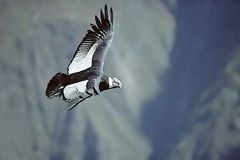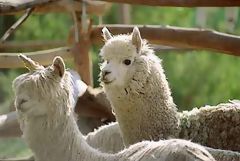 |
Associated pages: |
 The Colca Canyon is one of the main tourist attractions in the Arequipa region and stretches over 100 kilometers. Peruvians claim that it is deeper than the famous Grand Canyon in Colorado, with a depth that can reach 3,000 meters when measured from the top of the surrounding mountains. However, the depth varies across different parts of the canyon, with some areas being much lower.
The Colca Canyon is one of the main tourist attractions in the Arequipa region and stretches over 100 kilometers. Peruvians claim that it is deeper than the famous Grand Canyon in Colorado, with a depth that can reach 3,000 meters when measured from the top of the surrounding mountains. However, the depth varies across different parts of the canyon, with some areas being much lower.
What truly sets the Colca Canyon apart is its stunning landscape and unique atmosphere. The vast agricultural terraces, known as andenes, cover the mountain slopes and offer a breathtaking visual display. These terraces, carved over a thousand years ago by the Collagua civilization, long before the Incas, are a monumental feat of agricultural engineering. Their original purpose was to maximize land use for agriculture on steep and difficult terrain. Today, these terraces are still used by local farmers, adding cultural and practical value to this historical marvel.
 The journey through the Colca Canyon offers three key moments not to be missed. First, the trek through a vast desert pampa, where herds of llamas and alpacas graze peacefully in this austere yet majestic environment. With a bit of luck, travelers may also spot vicuñas, which are rarer but equally fascinating to observe. The pampa is dominated by imposing volcanoes such as Sabancaya, which sometimes offers natural spectacles with small visible eruptions in the distance.
The journey through the Colca Canyon offers three key moments not to be missed. First, the trek through a vast desert pampa, where herds of llamas and alpacas graze peacefully in this austere yet majestic environment. With a bit of luck, travelers may also spot vicuñas, which are rarer but equally fascinating to observe. The pampa is dominated by imposing volcanoes such as Sabancaya, which sometimes offers natural spectacles with small visible eruptions in the distance.
The second highlight is the ascent to the hill of Patapampa, located at an altitude of 4,800 meters. From here, visitors can enjoy panoramic views of the snow-capped peaks of The Andes, including the famous Hualca Hualca. At this altitude, some visitors may feel the effects of the high altitude, so it is recommended to take time to acclimatize and drink coca tea, a local tradition that helps alleviate altitude sickness.
One of the most anticipated moments of the trip is the visit to the famous Cruz del Cóndor viewpoint, located 197 km from Arequipa. This viewpoint is famous for being the perfect spot to watch the majestic flight of Andean condors, the largest flying birds in the world, with wingspans of up to 3 meters. Often, visitors can see several condors gliding on thermal currents at sunrise, creating an unforgettable spectacle.
This viewpoint offers spectacular views of the deep and rugged valleys of the canyon, with gorges reaching depths of 1,200 meters. From here, visitors can better appreciate the magnitude of the Colca Canyon and its unique biodiversity. In addition to condors, visitors may spot other bird species, such as eagles and hawks, as well as local mammals that inhabit the high altitudes of the canyon.
Beyond birdwatching, the Colca Canyon is a perfect destination for adventure enthusiasts. Several hiking trails allow visitors to explore the interior of the canyon and its surroundings. One of the most popular hikes is the descent to the village of Sangalle, known as the "Oasis of Colca," located at the bottom of the canyon. This challenging hike leads through stunning landscapes, and upon reaching the oasis, hikers can enjoy natural pools and a refreshing rest.
For the more adventurous, rafting on the Colca River is another thrilling activity. The river, which runs through the canyon, offers class III and IV rapids, making it an attractive destination for whitewater rafting enthusiasts. The canyon is also ideal for mountain biking and climbing, with numerous trails winding along steep slopes and ravines.
Finally, the Colca Canyon region is not only rich in natural landscapes but also in culture. The small villages that border the canyon, such as Chivay, Yanque, and Coporaque, are living witnesses of ancient Andean traditions that continue to this day. Here, visitors can enjoy traditional dances, explore local craft markets, and taste typical regional dishes, such as fresh trout and rocoto relleno.
The Colca Canyon is undoubtedly a jewel of southern Peru, where nature, adventure, and culture combine to offer an unforgettable experience to those who venture into this kingdom of condors.